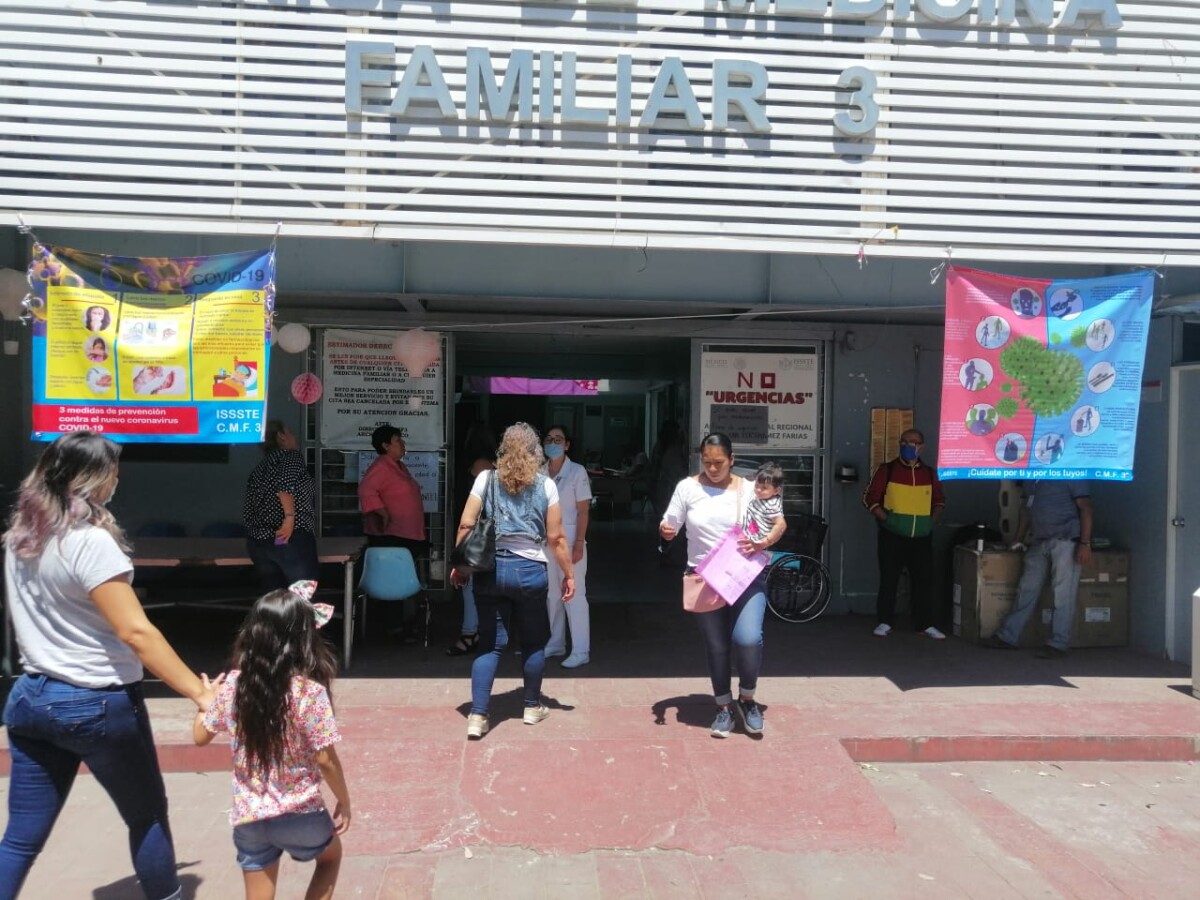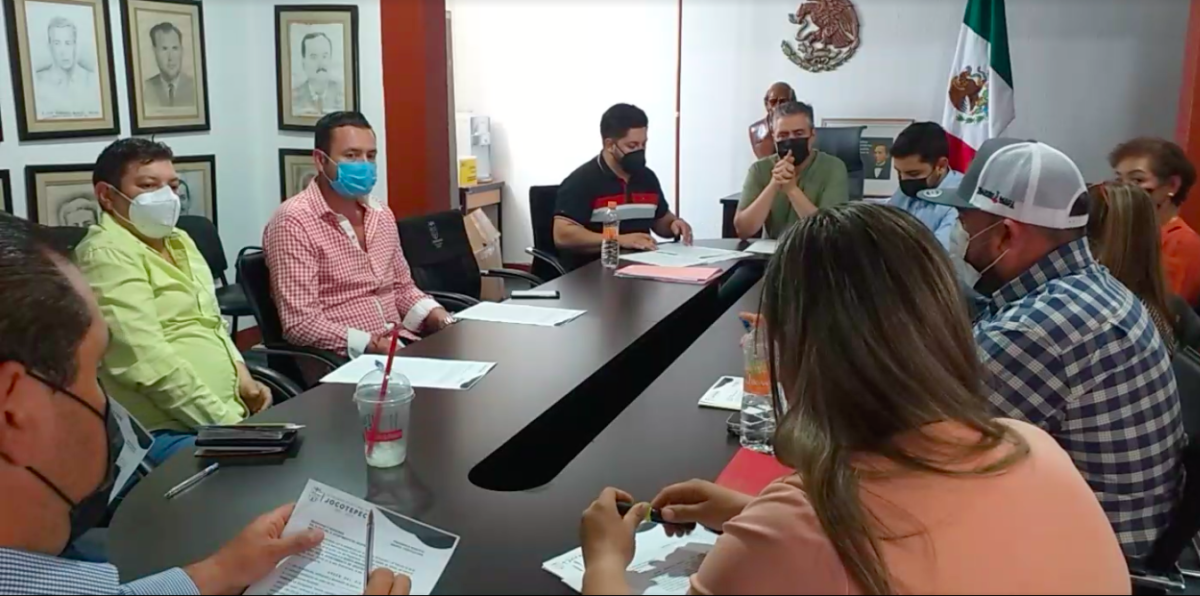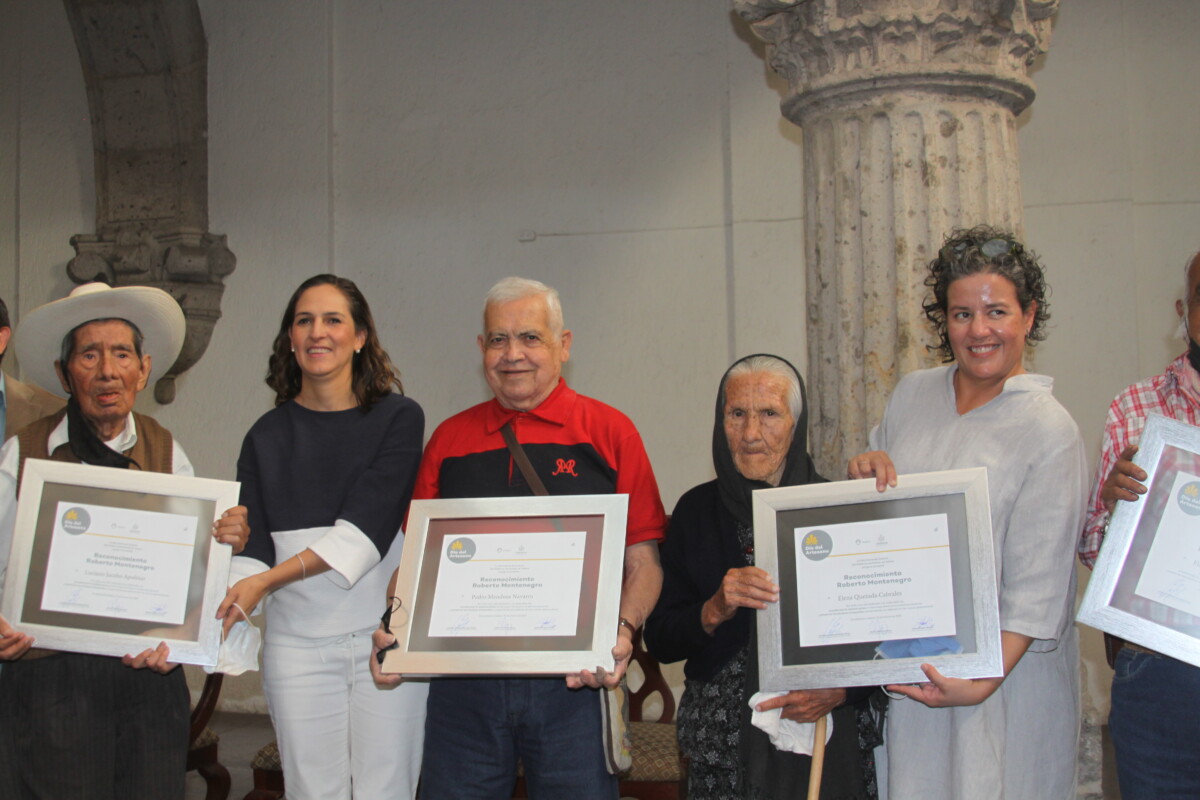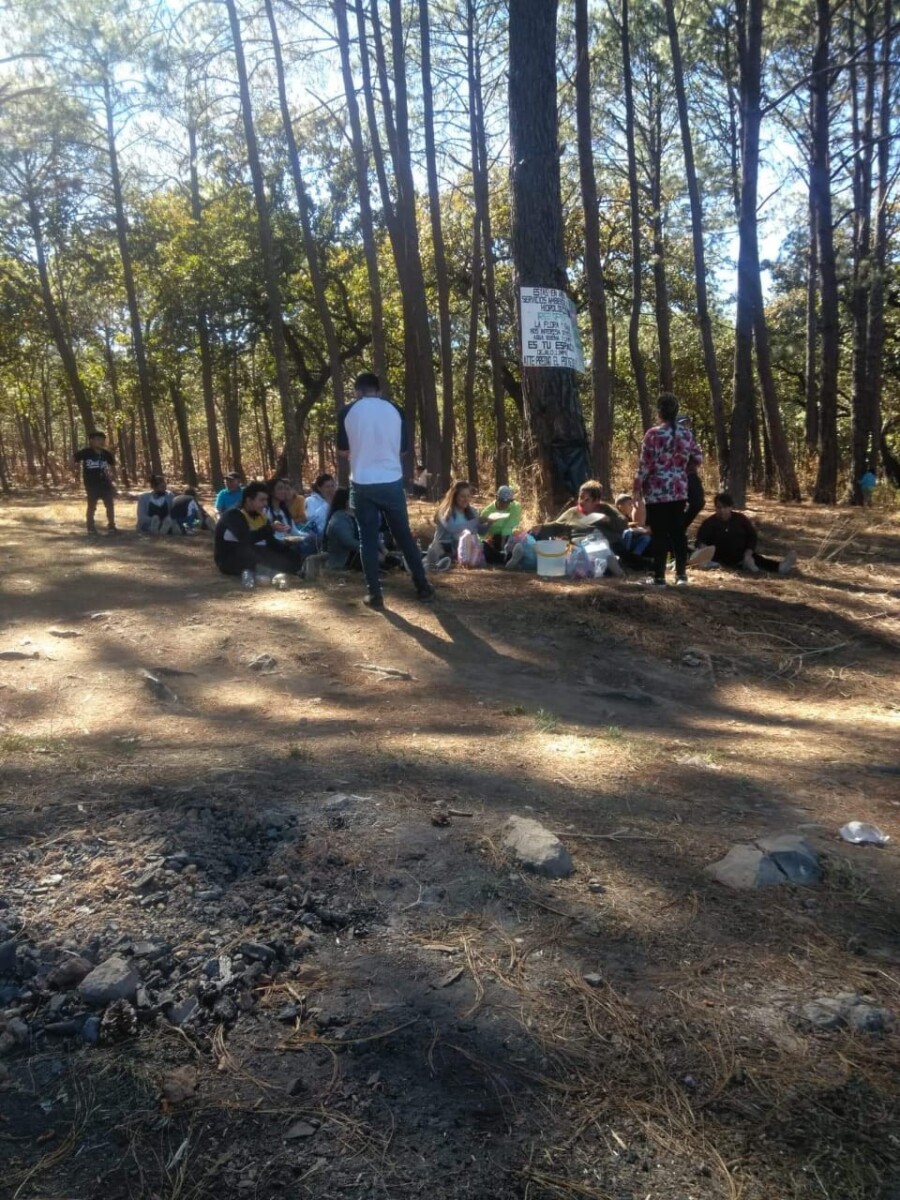gente
Lakeside Chronicles
Seño Cata doesn’t like pictures. ‘I am ugly,» she tells me. But her photograph contradicts her. Photo: María Reynozo.
María del Refugio Reynozo Medina
At 93 years old, Catalina Valencia Navarro walks around the house alone, leaning on a walker with an impeccable face. “I am very happy,» she says with a deep sigh.
She doesn’t need to say it, it is announced by her slow but sure steps, her beautiful luminous eyes and the gentle smile framed by her burnished hair. She wears black shoes that reveal her perfect toes, a long khaki A-line skirt and a soft almond-colored blouse.
Catalina Valencia retired at the age of 82 after 62 years as a teacher. “It’s a mistake to be in teaching if we don’t like it,» she said. In addition to being an elementary school teacher, she co-founded the Magdalena Cueva High School project in 1963 with the principal Antonia Palomares Peña. There she taught English and geography.
The first complete elementary school was started by Palomares because at that time in Jocotepec, elementary school was only up to fourth grade.
“The principal trusted me a lot, she was energetic and very prepared.”
“Cata» as her pupils called her, tells of her experiences with facts and names as if it were yesterday.
«The principal commissioned us to go all over town inviting the children house by house.” They also went to invite children in the towns of San Cristóbal, Zapotitán, Huejotitán and El Molino.
The first high school began in a borrowed building, the José Santana Elementary School. In the afternoon, after the elementary school children had finished their day, the older students attended school.
Mario González Barba taught biology and was the godfather of the first generation of students.
Priest Santiago Ramirez taught drawing and Engineer Jorge Ibarra Galvez taught chemistry.
It was a cooperative high school and the students paid 30 pesos a month. The teachers earned 15 pesos an hour if there was enough money to pay them. A board of trustees made up of people from the community managed the school and was transparent about the resources.
In 1970 the board of trustees managed to build a separate school with contributions from the efforts of the parents, the teachers, and the community, even the masons contributed their labor. The high school was a milestone in the history of Jocotepec. For many, there is a Jocotepec before the high school and Jocotepec after the high school.
In 1982, under the premise of the President of the Republic that there should be secondary schools all over the country, an authority came to Jocotepec to offer a secondary school. The municipal president at that time, responded that there was already a secondary school and allowed its appropriation for the creation of the official secondary school. That action stripped the school from the founding teachers. The teachers were fired. For Valencia Navarro and her colleagues, it was a repudiatory act. “I don’t even want to say the name of that authority because it still hurts me.»
As a high school teacher, something that always filled her with satisfaction was to see those children who, with so many difficulties, achieved their goal. Some students came from other communities, walking across the hill to get to school. The teachers adjusted the classes to the students’ schedules and even taught on Saturdays. Valencia Navarro recalls that a boy from Potrerillos would sleep in his friend’s garage so he could attend school.
«I loved the children from San Cristóbal very much because they were very noble, they left a beautiful mark on me.»
When Valencia Navarro retired, the high school had 300 students. She still remembers them.
“I don’t know if they loved me,» she says, «but many still visit me, and I love them.”
In 1987, «Seño Cata» (short for «Señorita» similar to «Ms.» or Missus) retired with 36 years of service in education. Her mission did not end there. A Zacatecan priest in San Juan Cosalá sought her out, Alberto Macías Llamas, who ran a boarding school. Valencia Navarro went for six months and stayed for 21 years serving the 200 children from rural communities.
Although Catalina was director, for her the most beautiful thing was not the important position, but the closeness with the children in the classroom as a teacher. «I always liked my students to be the first, never the last, and I would get the first places in the achievement contests.»
When I ask her to show me her awards, she agrees, but first says, “Wouldn’t it be a chocantería (impertinent)?”
We walk to the hallway where her degrees and awards hang. Those decorations and the recognition of her students are the most valuable things for her, although they are not proportional to the amount of the pension she receives.
«When I was a child, I saw my mother die. I stuttered and it wasn’t until I was nine years old that I overcame it and was accepted in elementary school.» The classroom was in what is now the Jocotepec municipal marketplace. «We were so poor in the town that we didn’t even have a school. One of the classrooms only had walls and no roof. Some teachers would take the children home and teach them there.» She remembers her teacher Felicitas Palomares with love; she was very important in her childhood. Perhaps that is why «seño Cata» is also a very dear teacher for her students.
If she were born again, she would be a teacher again.
Translated Nita Rudy
Jocotepec’s Public Security Commissioner Resigns
Juan Jesús Hermosillo Moreno, Commissioner of Public Security of Jocotepec for more than three years. Photo: Archive.
The commissioner of Public Security of Jocotepec, Juan Jesús Hermosillo Moreno resigned and was replaced by Ernesto Martín López Carrillo. In a video published on his social networks on March 17, the municipal president of Jocotepec, José Miguel Gómez López, announced the departure of Hermosillo Moreno for «health reasons» and the arrival of Ernesto Martín López Carrillo to take charge of public security in the municipality.
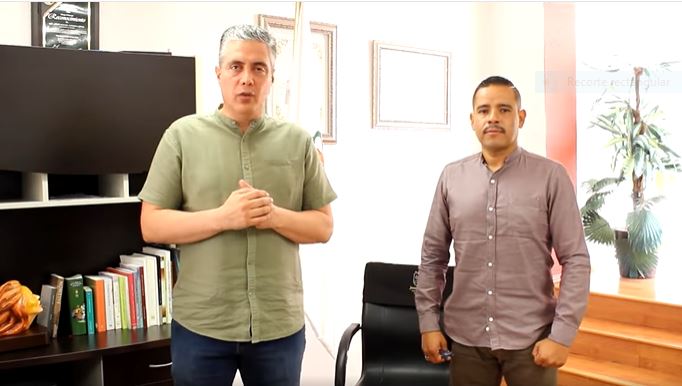
On March 17, President José Miguel Gómez presented the new Commissioner of Pubic Security, Ernesto Martín López as the new Commissioner of Public Security. Photo: Internet.
Gómez López said that the new commissioner comes from Zapopan and has experience in «police matters.» The president also thanked Juan Hermosillo for his more than three years of service at the head of the police station.
Hermosillo’s departure followed a violent incident on March 10 in which two policemen were killed and two firemen were wounded.
Translated by Elisabeth Shields
ISSSTE seeks medical office in Chapala
The beneficiaries will have to continue going to the Family Medicine Clinic 3 in Guadalajara for their consultations and medicines, while ISSST locates a place where the City Council can provide for medical care.
Editor. – After almost two years without medical attention in Chapala, the beneficiaries of the Instituto de Seguridad y Servicios Sociales de los Trabajadores (ISSSTE), Jalisco Delegation, now have a doctor in Chapala; however, there is still no office to provide medical attention.
That is why the Secretary General of Section 16 of the National Union of Education Workers (SNTE), Elpidio Yáñez Rubio, sought out the Mayor of Chapala, Alejandro de Jesús Aguirre Curiel, to request a space for medical attention.
The meeting took place on March 3 and was positive, since City Hall agreed to look for a space out of three options available. In he next few days the options will be evaluated by the municipal authorities to reestablish the medical services for the ISSSTE’s beneficiaries.
After 21 years in which César Flavio Ibarra Soltero provided this service to the beneficiaries of Chapala and surrounding municipalities, Elpidio Yáñez acknowledged the lack of a hospital to provide this care and promised to conduct a census of beneficiaries and based on this, determine whether the construction of a clinic is feasible.
Medical attention for ISSSTE affiliates has not been provided since July 2020 and, for the time being, beneficiaries go to the Family Medicine Clinic 3 in Guadalajara for their consultations and medicines.
Translated by Patrick O’Heffernan
Gunshots provoke chaos in El Molino elementary school
Public security elements arrived at the El Molino delegation after a report of armed persons. Photo: Courtesy.
Gunshots were fired around 10 am Monday, March 14 near J. Vicente Negrete school in El Molino, and armed individuals were seen in the area. Authorities took steps to safeguard students and teachers.
School officials said a normal school day was in progress when students and teachers heard gunshots near the school, and the children became frightened. Some students looked out the window and saw people with weapons hiding near the school. That caused panic among the more than 300 students and educational staff. Everyone took shelter in a classroom designated as a hiding place and remained there for about one hour.
“The children were the ones who saw them hiding,” said one school official. “It was horrible because everyone got scared and we quickly had to take shelter inside a special classroom. We thought the shooting would break out here outside.”
Phone calls came in quickly from concerned parents, but some officials who were interviewed said the police took around 40 minutes to answer the emergency call.
Some parents were upset about the incident and said they were worried about taking their children to school again. By press time for this edition, a large percentage of the students considered attending classes online instead of in person.
“We left the Covid pandemic to return to the pandemic of insecurity,” said one of the parents. “In truth, that claims more lives than the virus.”
Despite the reports and the testimonies of those affected, the Social Communication Department of the Jocotepec City Hall said nothing happened.
Translated by Mike Rogers
Families of the two murdered Jocotepec policemen will receive 100 percent of their pension
The city council approved to cover 100 percent of the pension of the policemen killed in the confrontation on March 10. Photo: Social Networks.
The Jocotepec City Council approved a proposal to grant 100 percent of the pension to the families of the two policemen killed in an armed attack on March 10.
During the fifth ordinary session of the council, held on Thursday, March 17, the council members observed a minute’s silence in honor of the security officers who died in the line of duty before discussing the pension to be granted to the bereaved.
Municipal trustee Carlos Alberto Zúñiga Chacón said that, according to the reports issued by the labor office based on the seniority of the officers, the corresponding pension would be 30 percent. Edgar Omar Leal Nava had been serving in the force for two years and three months, while Andrés Inclán Zamora had only 52 days.
However, due to the heroic performance of their work and the situation in which they died, municipal president José Miguel Gómez López proposed that it be increased to 100 percent.
«They were behaving like heroes, without weapons, without equipment. It’s the least we as public servants can do,» commented Gómez López.
The initiative was approved unanimously. A monthly amount of 10,500 pesos will be given to the families of those affected, which will be divided equally among the children of each police officer. The pension will be delivered until the last of their descendants reaches the age of majority.
Finally, the municipal president also assured that, after the unfortunate events, «It will be necessary to make a front to pressure the state and federal authorities,» to provide more economic support and to be able to adequately equip the public security officers.
The policemen were killed while responding to an accident near San Cristóbal Zapotitlán on the evening of Thursday, March 10. Two paramedics, a man and a woman attending the accident, were also injured in the aggression.
Translated by Sandy Britton
Health and Wellness:
By Leticia Trejo
It is understood that Yoga (as a system) or Yoga (as a discipline) is a technique that works body, mind and spirit. But, if we place this practice as only another method of physical activity, it is misunderstood by some. In fact, the practice of asanas (postures) is only one of the eight steps to achieve the benefits and the connection of these three elements that make up our earthly identity.
The Philosopher Patanjali (whom I already mentioned in a previous publication) generated the methodology of the eight arms of Yoga to achieve liberation, that is, the cessation of suffering, and to achieve the joy of transcendence; that is, that there are no longer obstacles in our mind or in our body to feel one with the creator (or universe, or this Being or Entity that surrounds us and covers us with its love). All this may sound a little subjective, but when we review what are those eight arms or eight stages, we realize that it makes perfect sense and that, whoever could practice Yoga in that order, with consistency and discipline will enjoy all its benefits.
- Yamas are the ethical and moral precepts of self-observation to realize how is our relationship with our fellow men, with the environment and with animals and nature. What is asked to practice in the Yamas? Ahimsa, which is NON-violence; Satya, which is truth; Asteya, to act with honesty; Brahamacharya, which is moderation; and Aparigraha, to live with what we generate by ourselves without accepting gifts seen as shortcuts. If we think about it well, it is clear that one of the great conflicts and obstacles to be happy is to have family problems, conflicts between neighbors, to hate animals or to mistreat nature, which generates sorrows in the mind and in the heart.
- Niyamas are the ethical and moral precepts of self-observation towards the relationship we have with ourselves. What is asked to practice in the Niyamas? Saucha, which is the purity of intention from the moment a thought crosses our mind until it becomes action; Santosa, contentment or gratitude, knowing that we are privileged for the fact of being alive and feeling; Tapas, prudence, to live knowing that each decision affects the course of our destiny; Svadhyaya, study of the self, all our life while we grow and mature learn to know ourselves with honesty; Isvara pranidhana, dedication of our work and gifts to a superior Being, to the Universe or to something beyond us.
- Asanas are a series of physical postures where the intention is the purification or constant detoxification of the body, to enjoy health and vitality and to be able to overcome adversities with a strong and flexible body.
This is how we can observe that before the physical practice, which traps many people, there are two vital steps to free our mind from obstacles generated by itself and the lack of knowledge we have of its activities. In the next edition we will continue listing the steps of this millenary system full of clear and specific processes to improve our physical, mental and spiritual health.
Translated by Christalle Dalsted
Dispensary will support the people of Ajijic
The over-the-counter medicine dispensary is located in the Ajijic delegation. Photo: Sofía Medeles.
Sofía Medeles (Ajijic).- An over-the-counter medicine dispensary was opened in the office of the Ajijic delegation.
The person in charge of the office, Maximiliano Macias Arceo, stated that the medicines will be donated by residents and, in turn, will be provided free of charge to whoever requests them.
There are two requirements for donated medicines. They must be in good condition and not expired, and they must be over-the-counter types of medications, for example, anti-flu, anti-diarrheal, analgesic, anti-inflammatory.
To receive the medicine, a copy of a medical prescription must be shown. If the desired medicine is available in the dispensary, it will be provided free of charge.
The Ajijic delegation, located in front of the main square on Colón Street, will receive and deliver the medicines during office hours, from 9:00 a.m. to 3:00 p.m.
Translated by Sandy Britton
Crónicas de la Ribera
Don Pedro Mendoza Navarro recibió el reconocimiento “Roberto Montenegro”, otorgado por la Secretaría de Cultura de Jalisco por su trayectoria como tejedor de sarapes de lana. Foto: María Reynozo.
Por: María del Refugio Reynozo Medina
Don Pedro Mendoza Navarro quien desde los ocho años de edad hace sarapes de lana en el municipio de Jocotepec; es uno de los doce artesanos de Jalisco convocados para recibir el reconocimiento “Roberto Montenegro”, por toda una vida de trayectoria como creador de gabanes tejidos en lana. El reconocimiento lo otorga la Secretaría de Cultura del Gobierno del estado, a los hombres y mujeres con mayor experiencia.
El centro cultural Patio de los Ángeles en el barrio de Analco de Guadalajara es el escenario para la entrega; desde antes de las cuatro de la tarde, del viernes 18 de marzo, una docena de artesanos junto con sus familias provenientes de unos diez municipios del estado permanecen sentados a la espera del inicio de la ceremonia.
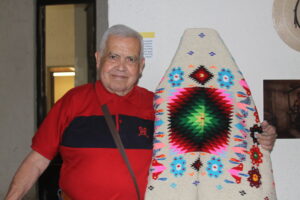
Los sarapes que don Pedro teje en su telar de pedal se distinguen por su colorido y técnica tradicional. Foto: María Reynozo.
Predomina la presencia de hombres de pelo cano que están en la primera fila; un hombre de la tercera edad en una silla de ruedas, está constantemente atendido por sus familiares. Le acomodan el sombrero, le hablan al oído, le revisan la boca, los ojos. Uno calza unos claros huaraches de cuero. Dos hombres usan sombrero blanco; uno de ellos lo sostiene en las manos a la espera de que comience la sesión. Mientras, le da vueltas, como el personaje del cuento de Edmundo Valadez (La muerte tiene permiso) que en una junta espera nervioso.
Doña Elena Quezada Cabrales de 89 años de edad, bordadora; es la única mujer homenajeada. También espera sentada al lado del hombre de la silla de ruedas, en silencio.
Son cerca de las cinco de la tarde y los artesanos siguen a la espera de las autoridades que están por llegar.
Don Pedro Mendoza, de 76 años de edad, está muy contento y nervioso también, la espera alarga el nerviosismo porque él es el seleccionado para tomar la palabra una vez que inicie la entrega de los reconocimientos.
-Mañana es dia de San José obrero- Dice muy orgulloso de sentirse igual, un sencillo obrero que hace piezas dignas de mostrarse al mundo.
Uno de sus sarapes está expuesto; es color crema de lana natural con hilos de colores; los brillantes romboides al centro parece que se mueven, las flores celestes y rojas aparecen brillantes, al lado de un cartel con una frase de don Pedro obtenida de una serie de entrevistas realizadas por parte de la dependencia.
“Cuando le enseño a un muchacho a usar el telar, me pongo contento, porque sé que mi conocimiento no morirá cuando yo me vaya”, reza el pequeño rótulo.
Según Rafael Castro Rivera, Jefe de Culturas Populares y Urbanas de la Dependencia estatal de cultura, los artesanos homenajeados, tienen en promedio una edad de 78 y 92 años.
Alrededor de las cinco de la tarde se hicieron presentes, Margarita Alfaro Aranguren, Directora de Fomento Artesanal; Lourdes González Pérez, Secretaria de Cultura de Jalisco y Mario Alberto Limon Carranza, Director de Gestión Integral de Proyectos de la misma dependencia. Ocuparon las sillas colocadas al frente en el presídium. También ahí estuvo don Pedro y doña Elena.
En su discurso, el obrajero jocotepequense expresa su emoción por la posibilidad de transmitir a las nuevas generaciones sus saberes, a través de la Escuela de Telar de Jocotepec, donde enseña a los jóvenes a tejer la lana.
En medio de aplausos y luego de los discursos de los funcionarios, los artesanos reciben el reconocimiento enmarcado en un cuadro de madera que abrazan para la foto.
Los 12 artesanos reconocidos fueron Alejandro Alfaro, Juan Manuel Águila, Pedro Mendoza, Elena Quezada, Flavio García, Luis Zermeño, Carmen Torres, Jesús Flores, Luciano Jacobo, Jorge Soriano, José Hernández y José Ascensión Juárez.
En torno a la reunión y con motivo del Día del Artesano (19 de marzo), la jefatura de la Secretaría de Cultura organiza la exposición de artesanías Hecho con el corazón en la que se exhiben piezas de distintos municipios. Se exponen huaraches y cuchillería de Sayula, objetos de ocochal de Mazamitla, esculturas de cantera rosa procedentes de San Miguel el Alto y objetos de talla de hueso de Teocaltiche.
Los asistentes comienzan a retirarse, algunos toman apurados el agua de horchata que les ofrecen y comen los tacos al vapor que se sirvieron. Otros se los llevan y salen apurados.
Las autoridades siguen participando en el recorrido. Entre todas las piezas; el sarape de don Pedro parece brillar; las flores adquieren movimiento cuando la Secretaria de Cultura, Lourdes González, lo toma entre sus manos en su recorrido final por la exposición. Don Pedro conversa orgulloso de su proceso, le muestra a las autoridades sus manos marcadas por el trabajo de toda una vida en el telar. No solo tiene decenas y decenas de sarapes en su haber, sino decenas más en la lista de espera. Está terminando un sendal para el Señor del Huaje, del que solo cobrará el material, porque reitera, los trabajos para él no se cobran.
Este tejedor de hilos de colores representa hoy al municipio de Jocotepec en un evento de reconocimiento austero donde lo que más resplandece, es ese sarape salpicado de figuras que “parece que se mueven”.
Dawn on González Gallo Avenue in Chapala marred with garbage
At the end of the party, empty bottles, cigarette packs and snack packages are left along González Gallo Avenue.
Jazmín Stengel(Chapala).- González Gallo Avenue in Chapala is one of the most popular spots where people go to drink and socialize on weekends, which causes a large accumulation of garbage.
According to shopkeepers in the area, the majority of the people who come to party at night are locals. However, few of them seem to pick up their garbage when they leave, leaving empty liquor and soft drink bottles, cigarette packs and an endless number of snack packages scattered all over the avenue.
Witnesses also said they were aware that the garbage truck passes by at night and very early in the morning. Many of the neighbors are in the habit of taking out the garbage after the garbage collectors have left, which also causes piles of garbage that are left overnight.
There are two main alcohol stores on the avenue, both of which said they help pick up their customers’ garbage before closing after midnight, but they do not always notice the garbage that people leave behind in the early morning.
One of the owners has observed on his security cameras, dogs tearing up the bags on the ground and citizens opening the bags to look for empty aluminum cans and leaving the rest of the garbage scattered on the ground.
The staff of Chapala Park and Gardens Department, together with the Public Waste Department, which has the obligation to keep the area clean start sweeping at 5:00 a.m. but this routine is not always regular, according to the shopkeepers who observe the street through their cameras.
Monday is the most critical day, due to the fact that there are more people partying on González Gallo Avenue the night before, so the garbage increases and the truck tends to pass later in the day. The merchants interviewed assume that this is due to the accumulation of garbage on the malecón, as they have observed the personnel in charge passing by on more than one occasion.
Translated by Christalle Dalsted
San Juan Cosala residents on pilgrimage to visit the Virgin of Talpa
People of all ages made the journey walking from Ameca to Talpa with the mission of visiting Our Lady of the Rosary. Photo: Courtesy of Alma Serrano.
Alma Serrano (San Juan Cosala).- A group of 40 people from San Juan Cosalá, made the traditional walk to Talpa de Allende to visit Our Lady of the Rosary. The faithful left on March 7 from San Juan Cosala to the municipality of Ameca, where they began their pilgrimage that lasted five days.
«We walk at night and rest while the sun is shining, since it feels very hot. It is essential to wear good tennis shoes, a good hat, a good lamp, they are needed all the way,» explained Chela Verar, who has been doing the walk year after year for 27 years.
People of all ages and genders, from infants to seniors, made the journey as an act of faith towards Our Lady of the Rosary of Talpa de Allende; the group of pilgrims arrived at the basilica on the afternoon of March 11.
Chela Verar shared that this custom is very present in her family that, despite its difficulty due to the long days of walking, it is worth it. «It is difficult, but it is a beautiful experience,» she concluded.
Every year hundreds of Cosalenses undertake this journey, either on foot, by bicycle or by bus, as a pilgramag to the Virgin of Talpa for the favors granted.
Translated by Patrick O’Heffernan
© 2016. Todos los derechos reservados. Semanario de la Ribera de Chapala


